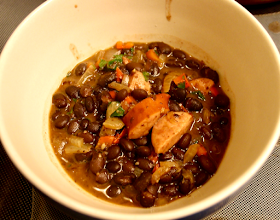14 January 2019
Recipe from Cook's Illustrated, September 2018
Looking back through my blog posts, I find many where I describe making applesauce. With just a few exceptions this was done without using a recipe and it usually comes out fine. A recent edition of Cook's Illustrated included an intriguing new recipe. Not only does it incorporate the peels and cores, but more importantly it works with almost any variety of apples and it does not call for any tools (e.g. food mill) that I do not have. It also allows you to create a chunkier applesauce, which I prefer, that a food mill would produce.
I used 3 pounds of Gala apples. These were peeled and cored. The peels and cores were placed in a small sauce pan with water and simmered, with occasional mashing, until the cores broke down, about 15 minutes. The peeled apples were quartered and cooked in a sauce pan with water, salt, sugar, and cinnamon until half of the pieces were broken down. The cooked apples were mashed. The cooked peels and cores were placed in a fine mesh strainer and the pulp was pushed into the mashed apples. From start to finish took 50 minutes. I expect the cooking time will vary significantly based on the variety of apples that are used.
This process resulted in a very nice apple sauce. The peels and cores added flavor and color. The sauce was well balanced, not too sweet and not too tart. When using tarter apples you could add some additional sugar. The applesauce kept well in the refrigerator and I had it with lunches and dinner for over a week. It is a little more work than usual but using the recipe led to a good applesauce, worth the small amount of extra effort.








